Thuja diseases: types and their treatment
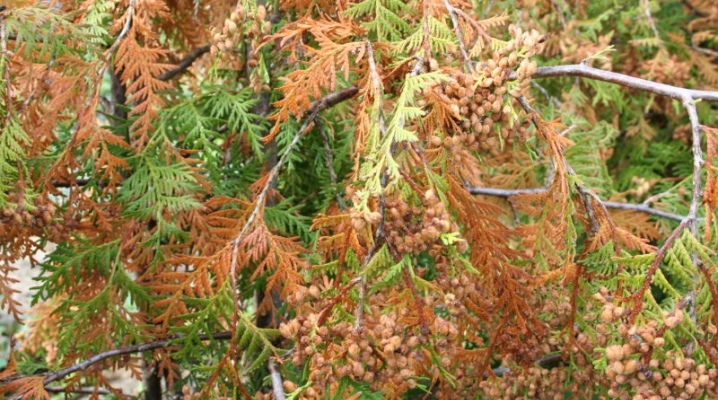
Thuja is a tree that belongs to the class of conifers and is evergreen. However, it is characterized not by thorny needles, but by the greenery softer to the touch and the original appearance, with which the plant attracts gardeners. However, like any representative of the flora, thuja can undergo a number of diseases that can have a strong negative effect on its condition and appearance... Not all owners of this plant know exactly what signs to identify an ailment in a tree, how to treat it and how to prevent the appearance of disease or pests in advance. All these nuances will be discussed in detail in our article.
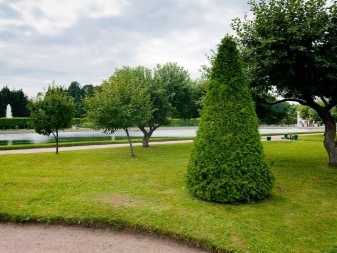
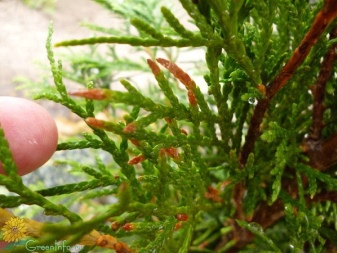
Causes
Thuja, like other plants, does not get sick for no reason. Diseases provoke a variety of factors, the main of which include the following:
- the physiological cause is characteristic, for example, of diseases of the fungal type;
- infections are also found among plants;
- one of the reasons that thuja dries up is improper care of the tree, for example, too high concentration of fertilizers;
- lack of watering and freezing of the soil in the cold season;
- lack of nutrients;
- constant moistening of undrained soil;
- hitting the surface of the tree with waste of domestic animals;
- attacks of seasonal pests.
The presence of these reasons explains the need for comprehensive protection of thuja from the effects of various negative factors.
And despite the fact that caring for this tree is not difficult, it is complex and requires taking into account various details.
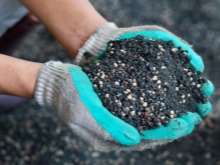


Types of diseases and means of combating them
If a certain ailment has already appeared on your thuja, it is important first of all to identify the disease itself and its causes, and then timely carry out procedures that will help heal the plant. Each disease has its own characteristics and methods of struggle. Among those to which thuja are exposed, it is worth paying special attention to the following.
- One of the most dangerous fungal infections for thuja is late blight. It inflicts the main blow on the roots of the plant, and then softens the trunk and affects the upper layers. The trunk takes on a grayish tone. The tree itself begins to wither, its root system becomes fragile and exudes a putrid odor. Replacing the soil will help save the tree from this ailment, since the fungus can exist in its layers for quite a long time. To avoid the appearance of such an infection, it is necessary to water it with fungicides.
- One of the diseases that progress in the spring is brown shoots. It begins with a gradual yellowing of the scales, and then turns into the acquisition of brown plants by the shoots and their subsequent dying off. To prevent the spread of the disease, the first step is to cut off the damaged shoots, which have already become yellow or brown. Then the root of the tree is treated with limestone, and a special top dressing is also added. Treatment with Fundazole solution every two weeks from July to September will also help prevent the appearance of this ailment. It is also helpful to spray the plant with a solution called Zircon, which helps the tree resist the fungus.
- Another spring ailment for this coniferous tree is rust. The needles of the plant darken, and then completely fall off.If the period of infection itself is spring, then the spread of the disease occurs throughout the year. The first method of treating a plant is to cut off the infected parts and burn them. But this method is not always effective. As a prophylaxis of the disease, you can spray the thuja with "HOM" a couple of times in 12 months - at the end of the spring period and in the summer, in case the ailment again made itself felt. Also, plants can be treated with Bordeaux liquid, which is easy even to make on your own by mixing lime with copper sulfate. The affected areas can be reanimated with Fundazol, applying it once per growing season. The infection is destroyed by the agent when it gets into the ground. In early spring, after the night frosts have stopped, it will be useful to use the drug "Topsin-M".
- False shield is a fatal disease for thuja, if you do not start to treat it in time. The disease manifests itself first as a plaque on the bark of the plant. The ulcers of this disease cover the entire surface of the trunk, and over time, if left untreated, the tree dies. To prevent this from happening, you can use ready-made preparations such as "Karbofos", "Antio", "Rogor" and "Actellik". From folk remedies, you can use fairly simple and budgetary options for the prevention of the disease. These include the straw and burlap used to coat the trunk of the tree, and a mixture of soap, water, and alcohol that is used for the branches. Some people prefer to remove scab ulcers mechanically - with a knife. But this must be done very carefully so as not to harm the tree bark.
- Tinder fungus - when individual knots dry, the spores of this fungus can get into the tissues of the thuja and subsequently form whole growths, harming the plant from the inside. Because of this, the plant dries up and takes on a yellow tint. Those areas that are affected by the tinder fungus must be cut off, then the wounds must be cleaned using a special putty, and then the tree must be treated with Bordeaux fluid.
- If you see that part of the plant has dried up or began to dry out for no obvious reason, then, most likely, you are dealing with such an ailment as fusarium of the root system. This is a special type of fungus, the first manifestation of which is the drying of the shoots, and subsequently of the whole thuja. Plants can be revived by introducing systemic fungicides under the root. Nutritional mixtures rich in iron and copper will also help restore thuja after illness. If the age of the tree has not reached two years, then "Epin" will become an additional assistant preventing the appearance of various diseases, spraying of which should be carried out according to the instructions for use.
The period of application of the solution is once every 10 days throughout the month.
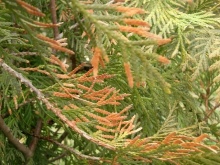
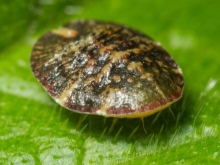
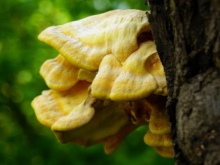
How to treat pests?
It is important to remember that in addition to diseases caused by infections and improper care, there are also pests that adversely affect the condition of the thuja. To protect against each of the parasites, certain methods should be used. The most common are the following.
- Liming the soil and treating trees with insecticides. Such procedures help to get rid of weevils, the breeding environment of which is excessively moistened soil with an increased level of acidity.
- Also, liming in conjunction with drainage procedures has a positive effect on thuja affected by wireworm. An alternative option is to till the soil with preparations containing diazolin.
- If iodine as a folk remedy helps fruit plants, then the infusion of dandelion or garlic helps to treat thuja from spider mites. Instead of these folk remedies, you can also use chemical ones, especially if a significant amount of leaves have turned yellow and crumbled.
- If, due to improper care, such a parasite as thuja bark beetle has appeared in the bark of a tree, then it is necessary to spray the affected representatives of the flora with insecticides.
- From folk remedies for combating thuja aphid, which contributes to yellowing and falling of needles, a soap solution is suitable. They need to treat aphid-affected areas for 7-10 days. But remember that the soap should not get into the root system. Insecticides such as "Fufanon" can also be used as a ready-made composition for treating plants. Pay attention to whether there is an anthill near the plants. It is because of its presence on the thuja that aphids can appear, since there is a feed connection between these insects. The cause of the appearance of a pest on trees can often be solved by simply killing the ants.
- Pruning, as well as treating thuja with products containing pyrethroids, is effective for combating speckled moths. Its larvae, which gnaw through the branches, contribute to the browning of the shoots and their further death. To prevent this from happening, use tools such as Tornado Anti-Mite, Fumitox Anti-Mite and others at the end of June.
To reduce the likelihood of harmful insects appearing, plants should be sprayed using HOM. This spraying is usually done in the spring.
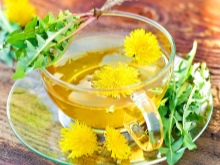

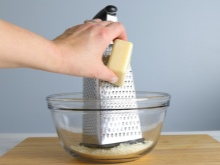
How to take care of it properly?
In addition to treating various ailments of thuja and protecting against pests, it must be remembered that proper care is a fundamental component of a healthy plant. There are some basic guidelines for the implementation of care procedures.
- Abundant watering should be done on average once a month. But it is also worth paying attention to the amount of precipitation and the condition of the soil.
- Young trees require more water as the root system is actively growing. However, remember to avoid waterlogging the soil. In order for the branches of a young plant to grow more actively, they should also be periodically moistened.
- If there is prolonged hot weather outside, then it is necessary to cover the soil around the tree with a peat layer.
- So that in the summer the tree does not suffer from sunburn, it is covered. In winter, the soil around the thuja should be sprinkled with sawdust.
- With the onset of spring, do not forget to feed the coniferous tree: introduce into the soil special fertilizers for coniferous representatives of the flora, which include ash, vermicompost, and compost.
- If urine from pets gets on the lower parts of the plant, you should limit the access of pets to the area near the tree by building a small partition.
- Make sure to prune old branches annually in the spring. Also, a useful procedure for stimulating growth and maintaining the shape of the crown is to cut the branches by 1/3 part.
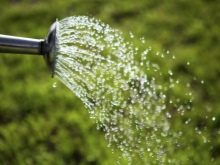
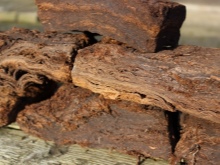
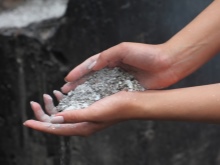
Thus, thuja, with proper care and timely control of diseases and pests, will become a real decoration of your garden. Carrying out all the necessary procedures, in each season you can enjoy the view of your beautiful thuja for a long time.
About what thuja is sick with and how to treat it, see the next video.



































































The comment was sent successfully.